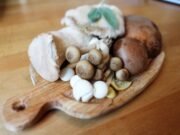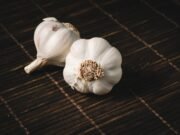Caulking and sealing around windows and doors is an important part of weatherproofing your home. Proper caulking and sealing can help prevent drafts, reduce energy costs, and improve the overall comfort of your living space. This DIY home improvement project is easy to do with the right materials and techniques.
Why Caulk and Seal Around Windows and Doors?
There are several benefits to caulking and sealing around windows and doors:
- Prevent Air Leaks: Gaps and cracks around windows and doors allow conditioned air to escape and unconditioned air to enter your home. This can lead to higher energy bills as your HVAC system works harder to maintain the desired temperature. Caulking and sealing minimizes air leaks.
- Improve Energy Efficiency: Studies show sealing air leaks can reduce heating and cooling costs by up to 30%. Preventing drafts with proper caulking and sealing leads to a more energy efficient home.
- Enhance Comfort: Drafts from windows and doors can make your home feel cold and uncomfortable. Caulking and sealing reduces drafts and helps maintain steady indoor temperatures.
- Protect Against Moisture: Air leaks allow moisture intrusion which can lead to mold, mildew, and rotting trim. Caulking and sealing protects your home.
- Reduce Noise: Caulking and sealing reduces outdoor noise entering through windows and doors. Your home will be quieter.
- Improve Appearance: Caulking and sealing provides a seamless look around windows and doors for better aesthetics.
Materials Needed for Caulking and Sealing
Caulking and sealing around windows and doors is easy to do yourself with a few key supplies:
- Caulk: Use a high-quality exterior-grade silicone or latex caulk recommended for windows and doors. Silicone provides the most flexibility.
- Weatherstripping: Adhesive-backed foam or rubber weatherstripping can seal gaps along door frames.
- Caulk Gun: A caulk gun allows you to evenly dispense the caulk.
- Caulking Knife: A caulking knife helps smooth out the caulk for a seamless finish.
- Masking Tape: Masking tape keeps the area clean from excess caulk.
- Clean Rags: Have some clean rags ready to wipe away any messes.
- Utility Knife: A utility knife helps remove old caulk or weatherstripping.
Preparing to Caulk and Seal
Proper preparation is key to achieving good results when caulking and sealing:
- Remove existing caulk or weatherstripping: Use a utility knife or caulk remover tool to remove any old caulk or weatherstripping.
- Clean the surfaces: Wipe away any dirt, dust or debris with a damp cloth. Ensure the areas are dry before applying new caulk.
- Read manufacturer’s instructions: Check the caulk tube or weatherstripping backing for any special instructions.
- Work in mild temperatures: Ideal application temperature is between 50-90°F. Avoid extreme cold or heat.
- Work in sections: Caulk in smaller sections so the caulk does not dry too quickly before smoothing.
- Use masking tape: Apply masking tape along the edges for clean caulk lines. Remove the tape immediately after smoothing the caulk.
How to Caulk Around Windows
Follow these steps to seal around windows with caulk:
Choose the Right Caulk
For window caulking, use a high-quality exterior grade silicone caulk which offers long-lasting flexibility to accommodate expansion and contraction of the building materials. Latex or acrylic caulks are not as durable for the weather extremes around windows.
Cut the Tip and Load the Tube
Cut the caulk tube tip at a 45° angle to allow for a wider opening. Insert the tube into the caulking gun. Cut the tip further if needed to allow for the proper sized bead of caulk.
Apply Masking Tape
Apply masking tape along the window sill and sides, laying it just far enough from the edge to leave space for the caulk bead. This helps for straight caulk lines.
Dispense the Caulk
Hold the caulking gun at a 45° angle and smoothly guide it along the gap between the window frame and siding or trim. Maintain an even pressure on the trigger to dispense a consistent bead size.
Tool the Caulk
Once applied, use a caulking tool or plastic spoon to smooth the caulk into the gap. Apply firm pressure with the tool to spread the caulk evenly. Remove any excess caulk outside of the tape edges.
Remove Tape and Allow Drying
Carefully remove the masking tape immediately after smoothing the caulk. Follow the manufacturer’s recommendations for cure time before exposing the caulked area to weather or water.
How to Seal Around Doors
Sealing around doors can be done with caulk or weatherstripping:
Caulking Around Doors
Caulking around door frames follows a similar process as caulking windows. Use a silicone or latex caulk and apply it in the gap between the door frame and the wall or threshold. Smooth into place with a caulking tool and allow time to cure.
Installing Door Weatherstripping
To make doors more energy efficient, apply weatherstripping:
- Clean the door jambs thoroughly and ensure they are dry.
- Measure each side of the door frame to cut the weatherstripping to the proper lengths.
- Peel the adhesive backing and press the weatherstripping firmly onto the door frame.
- Use a utility knife to trim off any excess weatherstripping.
- Seal the corners by cutting the weatherstripping at 45° angles and overlapping the pieces.
Tips for Successful Caulking and Sealing
Follow these tips to properly caulk and seal around windows and doors:
- Always use the right product for the job – exterior silicone caulk for windows and either silicone caulk or weatherstripping for doors.
- Thoroughly clean and dry all surfaces before applying caulk or weatherstripping.
- Follow the manufacturer’s instructions for application temperature range and cure time.
- Apply caulk in small sections and tool smoothly before moving on.
- Use masking tape and remove immediately after tooling for straight caulk lines.
- Take your time and don’t rush the caulking and sealing process.
Conclusion
Caulking and sealing around windows and doors is an easy DIY project that can make your home more comfortable and energy efficient. With the right materials and proper techniques, you can seal air leaks and prevent drafts. Just remember to use exterior-grade caulk or weatherstripping and allow adequate drying time. Properly sealing your windows and doors will help you save on energy costs while keeping your home’s interior at the right temperature.































